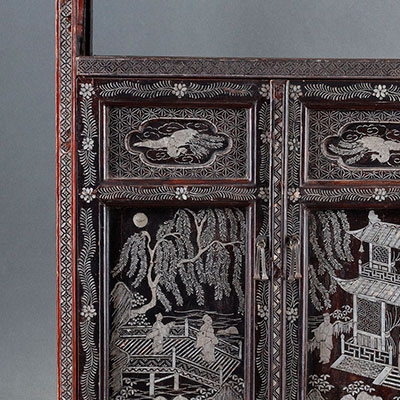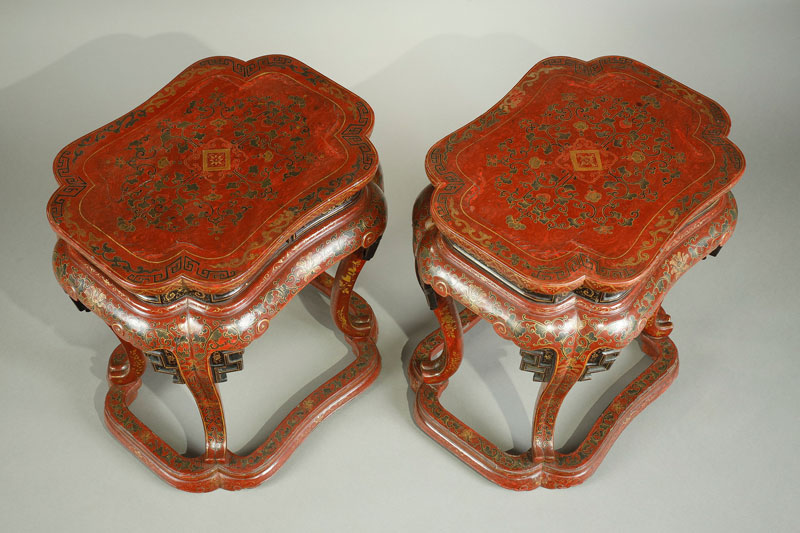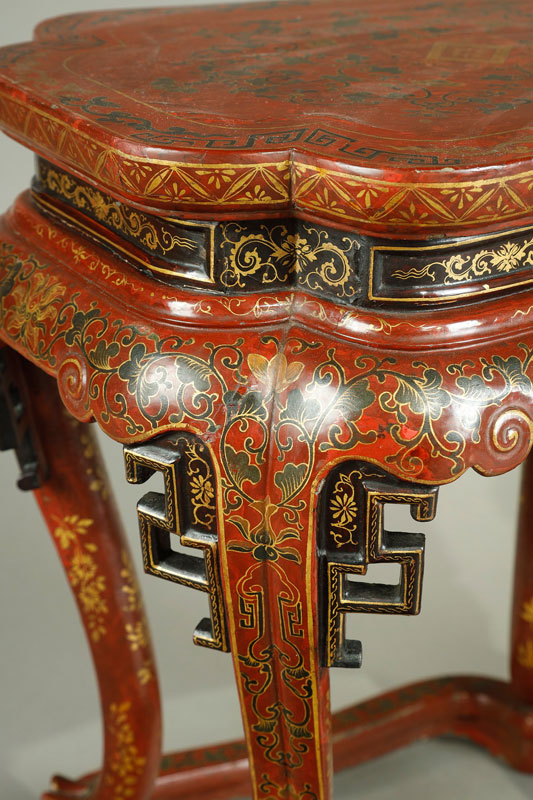Pair of imperial quadrilobed stands in red lacquered wood imitating faux marble
- Red lacquered wood imitating faux marble
Description
| These imperial stands are adorned with intertwining lotus patterns in green and gold-painted lacquer. They are supported by double feet on a spacer that is similarly decorated. The red lacquer imitates faux marble by adding ribs on the bottom, a feature rarely seen in imperial furniture but already known during the Ming dynasty. In fact, the Xiu Shi Lu, the only historical treatise on lacquer work, mentions lacquered furniture imitating marble decoration with gold paint highlights, much like our pair of stands. These imitations of materials flourished during the reign of Qianlong, as the emperor had a penchant for such technical innovations, and the court artisans worked diligently to fulfill his demands. This furniture is typical of the arrangements found in the throne rooms of the palace in Beijing, where at the back of the room, one can see a monumental screen, followed by the throne flanked by two tall stands and two other stands of similar size to these. The latter are known as chaji tea tables, introduced during the Ming dynasty and later used in the main halls of the Forbidden City under the Qing dynasty. Bibliography Tian Jiaqing, Classic Chinese Furniture of the Qing Dynasty, 1996, No. 30 (an example of an arrangement in a throne room) |
Pair of imperial quadrilobed stands in red lacquered wood imitating faux marble
- Red lacquered wood imitating faux marble
Discover more Furniture and screen
Return to the collection


A rare inlaid lacquer panel depicting a blooming magnolia tree


Rare gakke–suli two-doors cabinet decorated with dragons and phoenix


Rare pair of gilt and black lacquer double–lozenge stands


A « scholars in a garden » mother-of-pearl inlaid lacquer cabinet



















